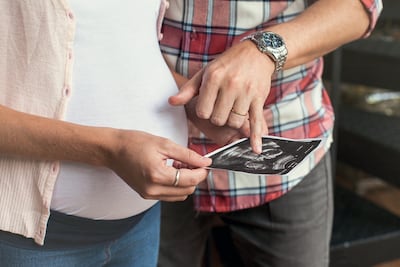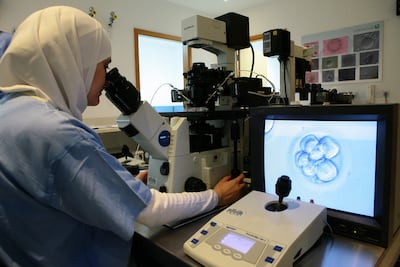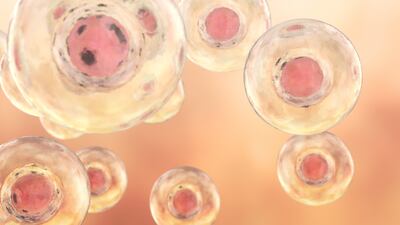Researchers have developed a model human embryo that replicates some of the early stages of human development.
The synthetic model has a heartbeat and traces of blood, providing an exceptional peek into the first weeks of life.
It was created from human stem cells and did not require the use of eggs, sperm or fertilisation, The Guardian reported.
The embryo is designed to mimic the cells and structures typically found in the third and fourth weeks of pregnancy.
However, it is missing the tissue that would go on to form the placenta and yolk sac in a natural embryo, ensuring that it cannot – theoretically – develop into a foetus.
Researchers believe the absence of these key structures renders their experiment ethically sound, a stance supported by international guidelines.
Dr Jitesh Neupane from the University of Cambridge's Gurdon Institute said the work does not aim to create actual embryos.
Instead, they are developing models that help researchers examine particular facets of human development.
Dr Neupane said when he took a random look through his microscope and saw the heartbeat, he was “scared, honestly”.
“It was overwhelming for me. People get emotional when [they] see the heartbeat,” he said.
The fast pace of advancement in this field was evident when three international teams published their own papers shortly after this discovery.

Dr Neupane's embryo model replicates some of the most complex features yet, including beating heart cells that are typically observed by day 23 in a natural embryo and hints of red blood, which would begin to show in the fourth week.
These structures were grown in a culture from embryonic stem cells and placed in a rotating bottle that served as a rudimentary artificial uterus.
Lacking the beginnings of a brain, placenta and yolk sac – all vital for guiding the development process – these structures began to deviate from the path of natural development over time.
“At the later time points, they don’t have all the features of embryos,” Dr Neupane said.
“It would be dangerous to compare them directly to in vivo embryos.”
The findings, which have yet to be published, could reshape researchers' understanding of early human development.
This type of embryo model is considered by international guidelines to bear similar risks to brain organoids or lab-grown human heart tissue.
It could offer vital insights into the impact of genetic disorders and the causes of recurrent miscarriages.
It might also serve to test the effect of drugs on embryos and examine the connection between gestational diabetes and heart defects in babies.
In the long run, the embryo models could be used in the field of regenerative medicine to create personalised grafts of heart or liver tissue that help patients waiting for donor organs.
Researchers currently use donated embryos from IVF procedures.
However, these are rare and difficult to obtain. Stem cell-based models of early human development may provide an alternative, possibly eliminating the need to use fertilised embryos.

The synthetic structures aren't flawless representations of human development as they can't fully emulate natural development stages.
Still, scientists are aiming to improve the models. Regulatory and ethical considerations largely concern the extent to which they resemble human embryos and whether the same rules should apply.
Dr Ildem Akerman, an associate professor in functional genomics at the University of Birmingham, said the cells could potentially develop into embryos.
So-called “synthetic” embryos are not entirely synthetic as they are derived from living stem cells, she said.
Professor Roger Sturmey, a senior research fellow in maternal and foetal health at the University of Manchester, says there is still much to learn about the similarities between synthetic and naturally formed embryos.


